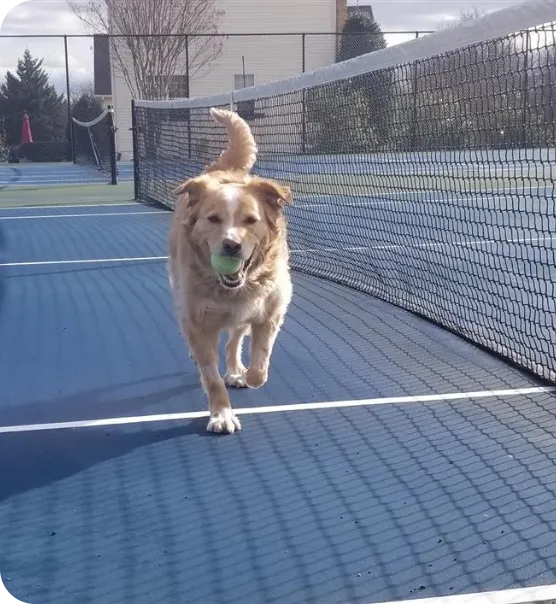The Danger of Leaving Your Dog in a Hot Car
Among the range of heat-related illnesses, heatstroke is the most serious condition that can affect dogs if they’re exposed to high temperatures. There is a true danger of leaving your dog in a hot car that we can’t emphasize enough!
As a pet owner, it’s easy to underestimate the danger of leaving your dog in a hot car even for a short time. We can try to justify leaving our pup locked in the vehicle by telling ourselves that we’ll only be gone for a few minutes, or that the temperature isn’t really that high, or even worse, that by cracking the window open the dog will be just fine. Unfortunately, many pet owners don’t realize that keeping your dog alone in a car as the temperatures rise can be fatal.
The biggest danger of leaving your dog in a hot car is heat stroke. VCA Animal Hospitals explains that heat stroke is a term commonly used for hyperthermia or elevated body temperature. In most cases, if a pet has a body temperature above 103°F (39.4°C), it is regarded as abnormal or hyperthermic. Dogs with a limited air passage, such as brachycephalic breeds (such as pugs, boxers, and bulldogs), are particularly vulnerable, as are overweight and older dogs. Even when the outside temperature and humidity are only moderately high, these dogs that tall into these categories may exhibit symptoms of heat stroke.in Dogs
Understanding the Signs of Heat Stroke in Dogs
Dogs are particularly susceptible to heat stroke because they can’t regulate their body temperature as effectively as humans can. The few sweat glands they have are in their feet and panting is the only way they can try to regulate their temp.
There are several signs to look out for if you suspect your dog may be suffering from heat stroke. One of the most common signs is panting. If your dog is panting excessively, it could be a sign that they are overheating.
Common Heat Stroke Symptoms
The danger of leaving your dog in a hot car can’t be emphasized enough. Heat stroke in dogs can be a life-threatening condition. If left untreated, it can cause organ failure and even death. Some of the most common symptoms of heat stroke in dogs include:
- Rapid panting
- Bright red tongue and gums
- Thick, sticky saliva
- Weakness
- Dizziness
- Vomiting
- Diarrhea
- Rapid heartbeat
- Collapse
If you notice any of these symptoms in your dog, it’s important to act quickly to prevent the condition from worsening.
What to Do If You Suspect Your Dog Has Heat Stroke
If you suspect that your dog has heat stroke, the first thing you should do is get your dog out of the hot environment and move them to a cooler location. You can use cool water to wet your dog’s fur and skin, which can help to lower their body temperature. You can also place a cool, wet towel over your dog’s body to help them cool down.
This is important — ever use ice-cold water to cool your dog down. This can actually make the condition worse by causing their blood vessels to constrict and preventing the body from cooling down properly.
Overheated Dog Recovery – Steps to Take
Once you’ve moved your dog to a cooler location and begun to cool them down, you should contact your veterinarian immediately. Your vet can provide further guidance on how to help your dog recover from heat stroke.
In some cases, your vet may recommend hospitalization for your dog. During this time, your dog may receive fluids to help replace any fluids lost during the heat stroke. They may also receive oxygen to help them breathe more easily.
Preventing Heat Stroke in Dogs Left in Hot Cars
The best way to prevent heat stroke in dogs is to avoid leaving them in hot cars altogether. Even if you’re just running a quick errand, it’s important to leave your dog at home where they will be safe and cool.
Heat Stroke in Dogs – Myths and Facts
There are many myths surrounding heat stroke in dogs, and it’s important to separate fact from fiction. One common myth is that shaving your dog will help keep them cool. In reality, shaving your dog’s fur can actually make them more susceptible to sunburn and skin damage.
Another common myth is that leaving the windows cracked will provide enough ventilation for your dog. In reality, cracking the windows does very little to reduce the temperature inside the car.
How to Help a Dog in Distress in a Hot Car
If you see a dog in distress in a hot car, it’s important to take action. The first thing you should do is try to locate the owner of the car. You can also contact local law enforcement or animal control for assistance.
If the situation is dire and the dog is showing signs of heat stroke or other serious medical conditions, you’re going to have to decide next steps. However, it’s important to note that breaking into a car without permission is illegal in many areas.
Heat Stroke in Dogs – Long-Term Effects
Heat stroke in dogs can have long-term effects on their health. Some dogs may experience lasting organ damage or changes in behavior. Seek veterinary care as soon as possible if you suspect your dog has heat stroke.
Conclusion – The Importance of Preventing Heat Stroke in Dogs
Heat stroke in dogs is a serious condition that can be fatal if left untreated. As a pet owner, it’s important to take steps to prevent heat stroke from occurring in the first place. This includes avoiding leaving your dog in hot cars, providing plenty of water and shade, and seeking veterinary care immediately if you suspect your dog has heat stroke. By taking these steps, you can help keep your furry friend safe and healthy.
CTA:
If you can’t safely leave your pup alone in your home while away, remember that The Dog Stop® offers daycare services that allows your dog to be safe and healthy in a fun, cared-for environment. You can enjoy your day without worrying about your four-legged family member. Find a Stop convenient to you.



